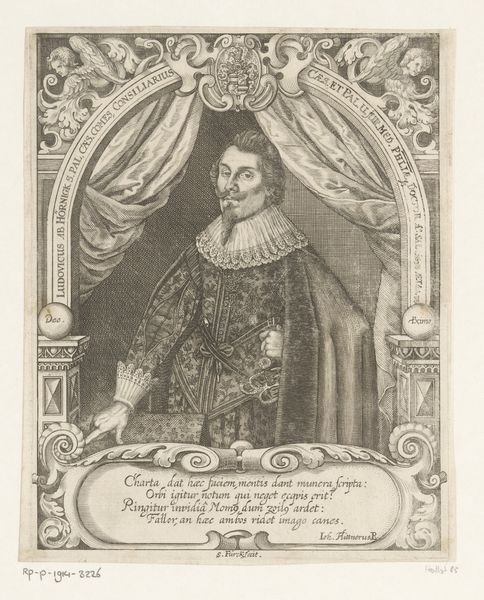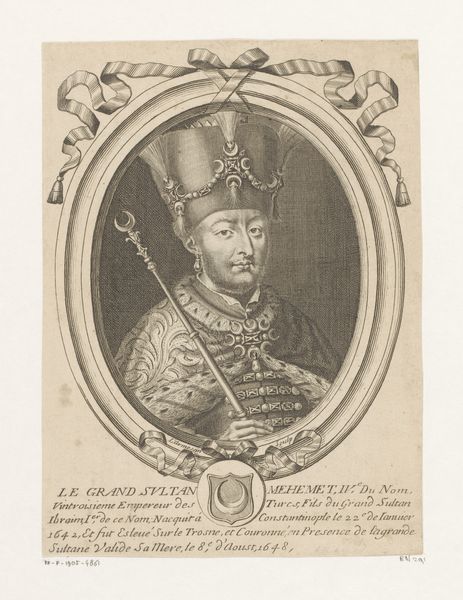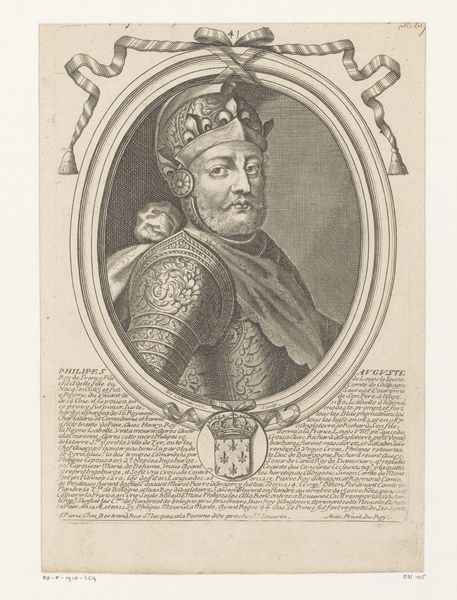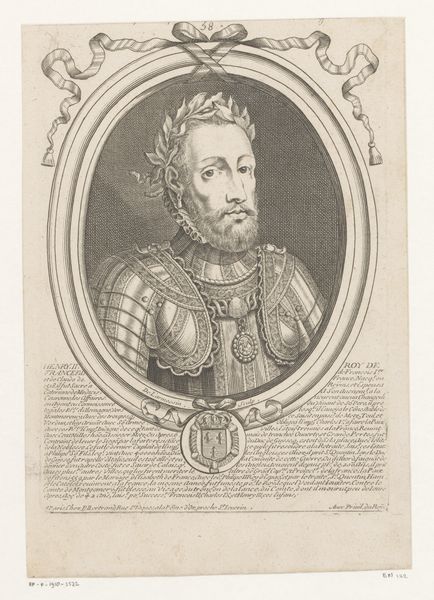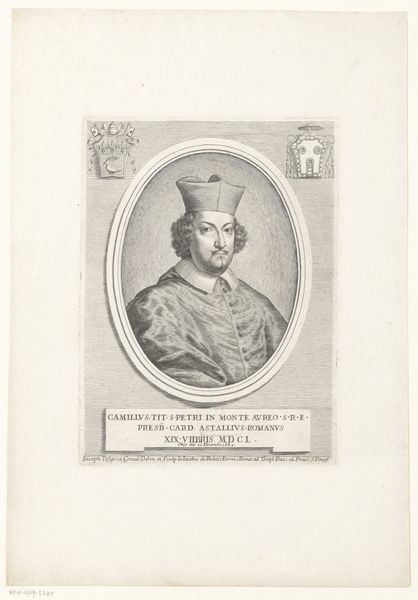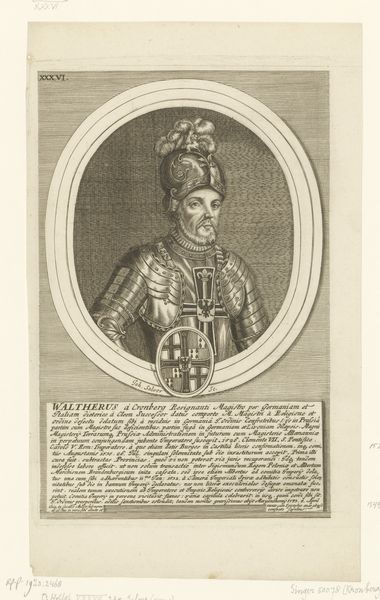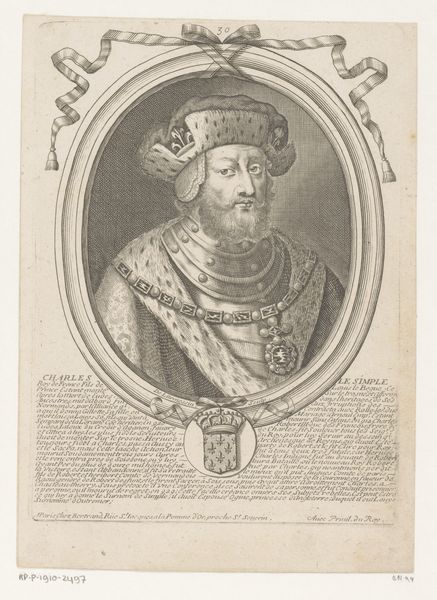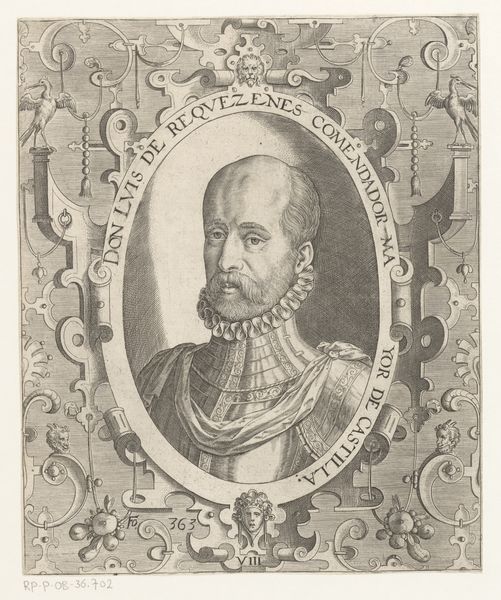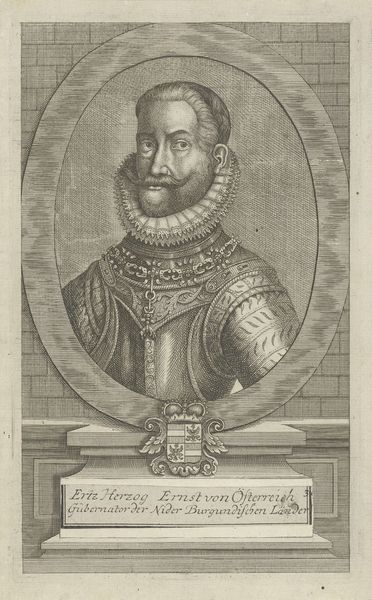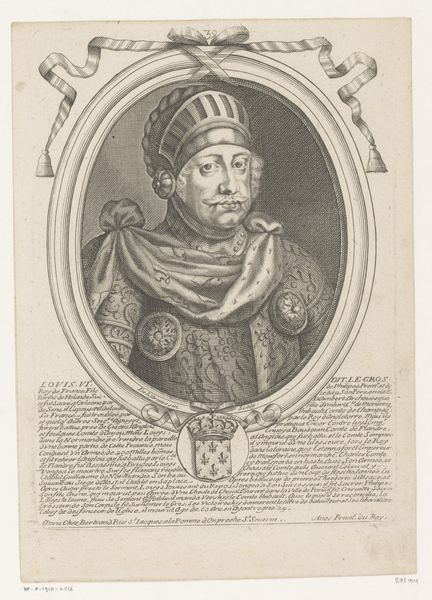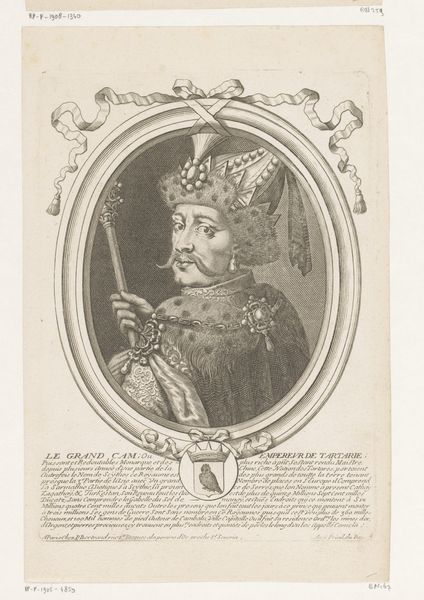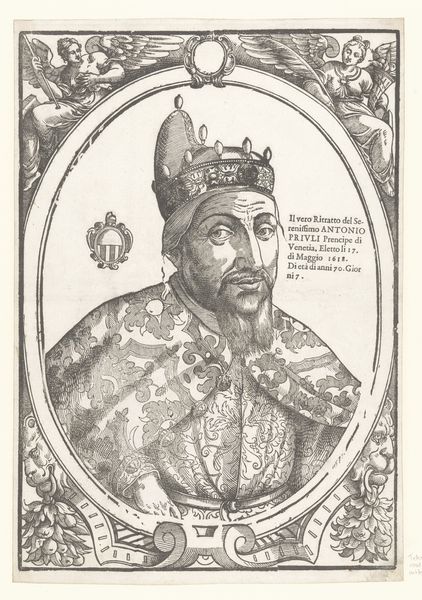
Dimensions: height 208 mm, width 136 mm
Copyright: Rijks Museum: Open Domain
Editor: So this engraving, "Portrait of Charles de Gondi," from sometime between 1722 and 1800 by Louis Moreau, really strikes me. It's so intricate, with all the fine lines, and the details in his clothing seem to highlight his status. What catches your eye about it? Curator: I’m interested in how the very *process* of engraving here informs the meaning. Think about the labor involved. This wasn't a quick sketch; it was a meticulous, time-consuming task to translate an image of power into a reproducible form. How might the act of replication – creating multiple images of Gondi – influence or dilute his authority? Editor: That's an interesting point. I hadn't thought about the act of reproduction affecting the power of the subject. Was engraving a common way to disseminate images of nobility? Curator: Exactly! Engraving allowed for a wider circulation than a unique painted portrait. But consider the material conditions. Copper plates, inks, paper—these materials had costs and associations. The resulting prints become commodities, consumed by different social classes. Who had access to these images and what did they *do* with them? Did this commodification empower the sitter or did it, ironically, make them more accessible to criticism or parody? Editor: So, you’re saying the engraving process wasn't just about creating an image, but about participating in a social and economic system? Curator: Precisely. The image is intrinsically linked to the labor of its creation, the materiality of the print, and the socio-economic context of its distribution. Looking closely, what evidence can we gather to interpret the networks involved in bringing this image into being? Editor: That gives me a whole new way of looking at this! I was just seeing the surface-level representation, not thinking about how it was actually produced and consumed. Curator: The “how” is often more revealing than the “what.”
Comments
No comments
Be the first to comment and join the conversation on the ultimate creative platform.
